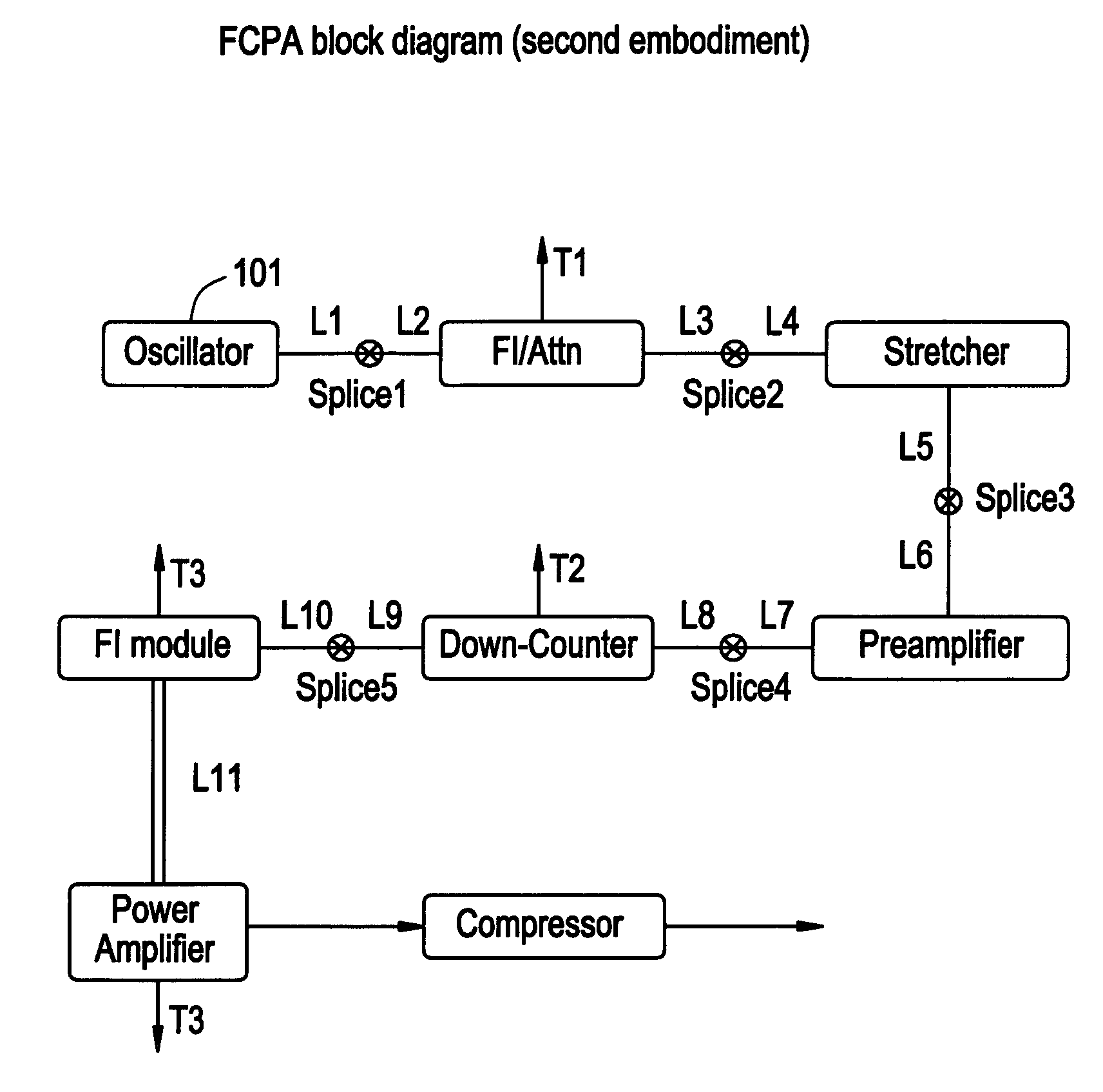Modular fiber-based chirped pulse amplification system
a chirped pulse and fiber optic technology, applied in the direction of lasers, semiconductor lasers, active medium materials, etc., can solve the problems of not being able to guarantee the required stable operation of the laser, the difficulty of making such single-mode amplifiers has also been a limitation, and the method has not been described
- Summary
- Abstract
- Description
- Claims
- Application Information
AI Technical Summary
Benefits of technology
Problems solved by technology
Method used
Image
Examples
second embodiment
[0069]A block diagram of a second embodiment is shown in FIG. 11. The major difference in this embodiment is that the pulses are stretched before the first amplifier. Thus, in this design, nonlinear optical processes are minimized in the amplifiers. The advantage of this system is that reproducibility from system to system is easier to attain. However, the seed bandwidth from the oscillator has to be broader after the filter and before the stretcher (12-14 nm compared to 3 nm). The spectrum of the oscillator and after the first filter module is shown in FIGS. 12A and 12B. It is critical to have a filter between the oscillator and the rest of the system. At this point the spectral characteristics of each amplifier are not sufficiently the same to operate a system without a filter. The filter can be placed before the stretcher or after. If it is placed before the stretcher, then an attenuator module is used with this module. If the spectrum is filtered before the stretcher it is neces...
first embodiment
[0070]The spectrum from the preamplifier and the power amplifier are shown in FIGS. 13A and 13B. It will be noted that no noticeable nonlinear affects are taking place in the amplifiers. There is also some narrowing of the spectrum from gain narrowing. The spectrum of the output from the compressor is shown in FIG. 14A with the autocorrelation shown in FIG. 14B. As with the first embodiment, the pulse duration measured by the autocorrelator is 488 fs. This again gives a 345 fs pulse width assuming a Gaussian pulse shape. The output is 440 mW at a 200 kHz repetition rate. Thus a 2.2-μJ pulse is generated.
[0071]In order to be able to recompress the pulses, the spectrum of the output must be limited to 7-9 nm when a fiber stretcher and a bulk-grating compressor are used together. In order to get this spectral width the initial width needs to be broader since the amplifiers have some gain narrowing. In the case of the nonlinear amplifier, additional narrowing and filtering is necessary ...
PUM
 Login to View More
Login to View More Abstract
Description
Claims
Application Information
 Login to View More
Login to View More - R&D
- Intellectual Property
- Life Sciences
- Materials
- Tech Scout
- Unparalleled Data Quality
- Higher Quality Content
- 60% Fewer Hallucinations
Browse by: Latest US Patents, China's latest patents, Technical Efficacy Thesaurus, Application Domain, Technology Topic, Popular Technical Reports.
© 2025 PatSnap. All rights reserved.Legal|Privacy policy|Modern Slavery Act Transparency Statement|Sitemap|About US| Contact US: help@patsnap.com



